Fundamentals of Shear (SHR) Testing
Although tension is the most common type of loading for material testing, shear is also an important loading type. The behavior of materials under shearing is important for many applications, including forming, crash safety, and machine design. Accordingly, engineers have created testing methods to isolate shear as the primary load so that material shear behavior can be studied. This article will give a brief overview of shear testing, including theory, equipment, methods, results, and testing standards.

 Shear Testing Setup with 2D-DIC
Shear Testing Setup with 2D-DICRelevance: Why Shear Testing?
Shear is essentially a type of loading that causes sections of material to slide past each other. Strong shear loads are created when two forces are applied to an object in opposite directions (we can think of these directions as “up” and “down”) at different locations. Resulting loads cause one section of material to deform upward, while a neighboring section of material deforms downward. With strong enough applied forces, the material will completely shear apart.
Scissors are the most obvious example of shear loads at work in everyday life. In fact, scissors are sometimes called “shears” for this very reason! Scissors are a pair of sturdy metal blades that almost align with each other, but not quite perfectly. When the scissors are closed on a sheet of material, the blades push the material in opposite directions, causing it to shear. Sharp scissor blades aid in the shearing process, but many weak materials such as paper can easily be cut even with blunt safety scissors. This is due to their susceptibility to shear loads.
The relevance of shearing extends far beyond the use of scissors, however. Any time a section of material is subject to two external forces which are not equal and opposite, there will be shear. This can manifest in structural beams, which experience tension, bending, and shear forces. Many useful machine components are also designed with shear in mind.
One example is the shear pin, which is incorporated into many types of heavy machinery as a failsafe mechanism. If something goes wrong during operation and the equipment experiences loads exceeding safe limits, the shear pin is designed to fracture, disconnecting moving parts and effectively stopping the machine. In this way, the shear pin is sacrificed to ensure that nothing else in the machine is damaged.
To ensure the effectiveness of components like the shear pin, engineers must be able to predict how parts will behave under shear loading. This is where material testing comes in.
Shear Testing Equipment
The objective of shear testing is to deform a material under shear loading until fracture. Like most material tests, shear testing takes stress and strain as quantities of interest.
Efficient shear testing methods tend to exploit techniques used in other more common testing methods. For example, rather than performing shear tests with a dedicated machine, shear testing is usually designed to be compatible with the universal testing machines (UTM) used in tensile testing. The key is to realize that sample loading can be controlled by changing the sample geometry rather than the external equipment. This allows shear testing to use the same equipment setup as the uniaxial tension test.
The primary piece of equipment is the universal tester or pull tester. This machine is oriented vertically, with two grips to hold the material test sample at both ends. The bottom grip is static, while the top grip moves upward during the test, anchored by the crosshead. The crosshead is a beam that can only move up or down; the speed of a test can be expressed by referring to the “crosshead speed.” Crosshead movement is tightly controlled by the machine‘s drive system, which in turn is controlled by electronics and dedicated test control software. The control software typically directs the crosshead to move upward at a constant speed, though other control methods such as strain rate control can be used.
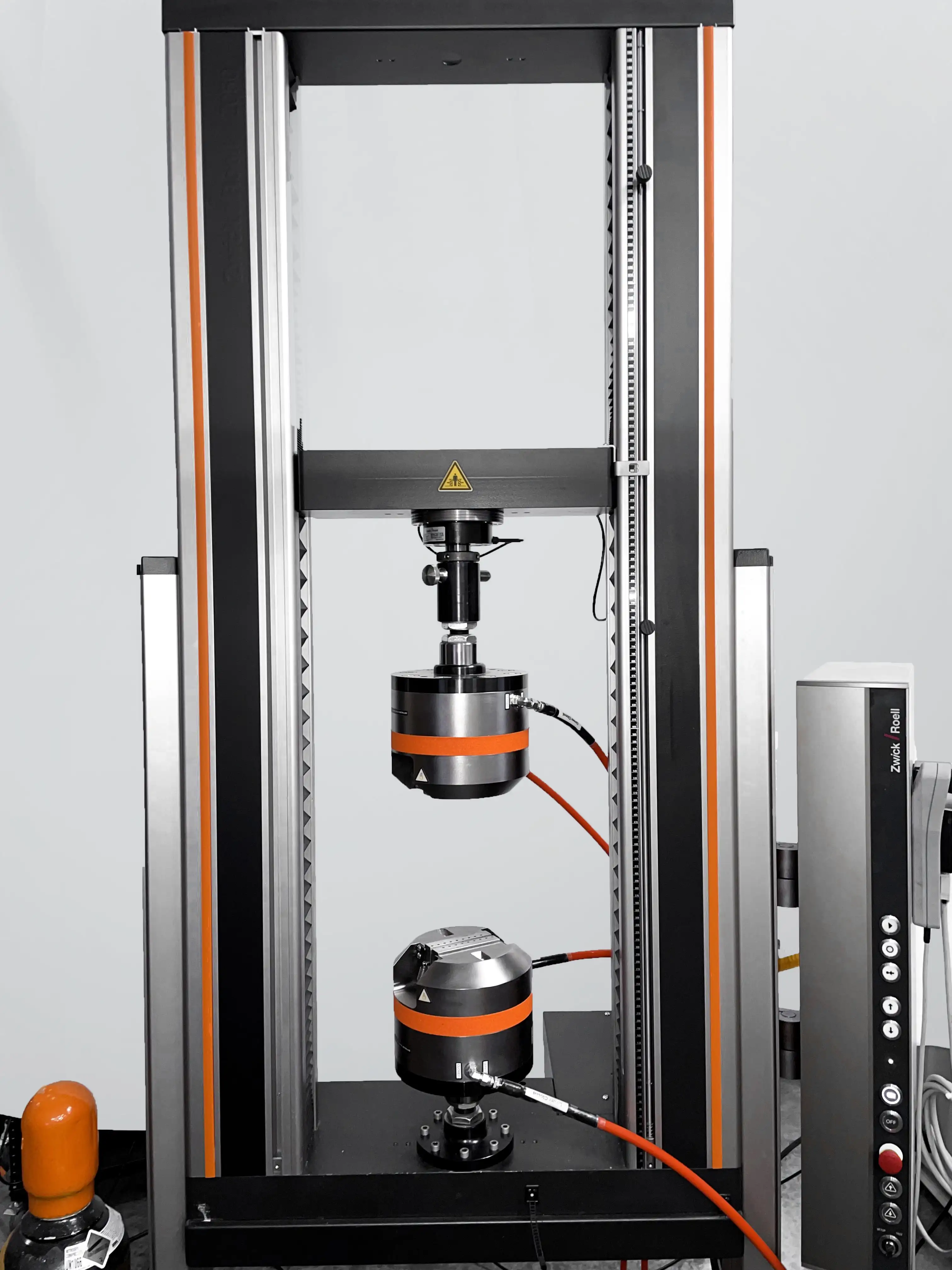
 Universal Testing System
Universal Testing SystemWith shear testing, it is very important to align the test sample vertically. This is because a small tilt in the sample orientation can cause large differences in loading within the material. Universal testing machines often provide built-in apparatus for ensuring a proper sample orientation, such as markings for reference or adjustable bumpers to brace the sample against.
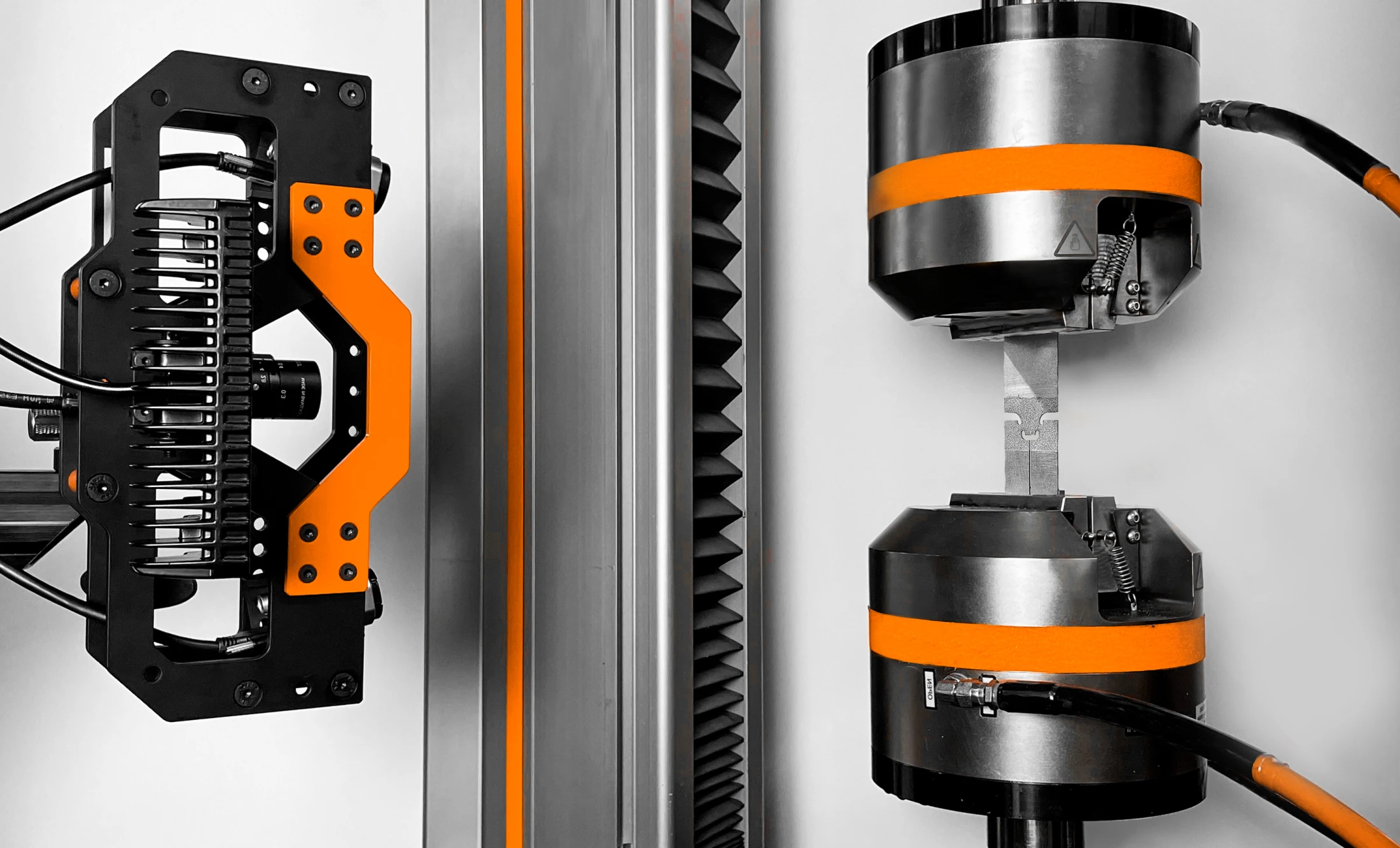
 Shear Testing Setup with DIC
Shear Testing Setup with DICSensors are also crucial for any material test. Like the standard tensile test, shear testing can utilize load cells and extensometers to give forces and strains. However, traditional extensometers cannot provide comprehensive strain information for a shear test. This is because common physical strain sensors are unidirectional (they only measure strain in one direction) and only one sensor can be placed in each location on the material. This makes it impractical to measure shear strain, which acts in two directions at points in very close proximity to each other. One can use special strain gages for shear loading, but that is highly time consuming, and still has many practical measurement limitations. Instead, strain information is best provided using digital image correlation (DIC). For DIC, the test piece is painted in a speckle pattern and the entire test is filmed using one or more cameras. The DIC software can compare the later images to the initial “reference” image and calculate the displacement (and thus, the strain) over the painted surface.
Shear Test Sample Geometry
Shear testing requires a complex sample design compared to other forms of pull testing. Because the objective is to fracture the sample with a shear load, the sample is designed so that the expected failure area is oriented perpendicular to the axis of the testing machine.
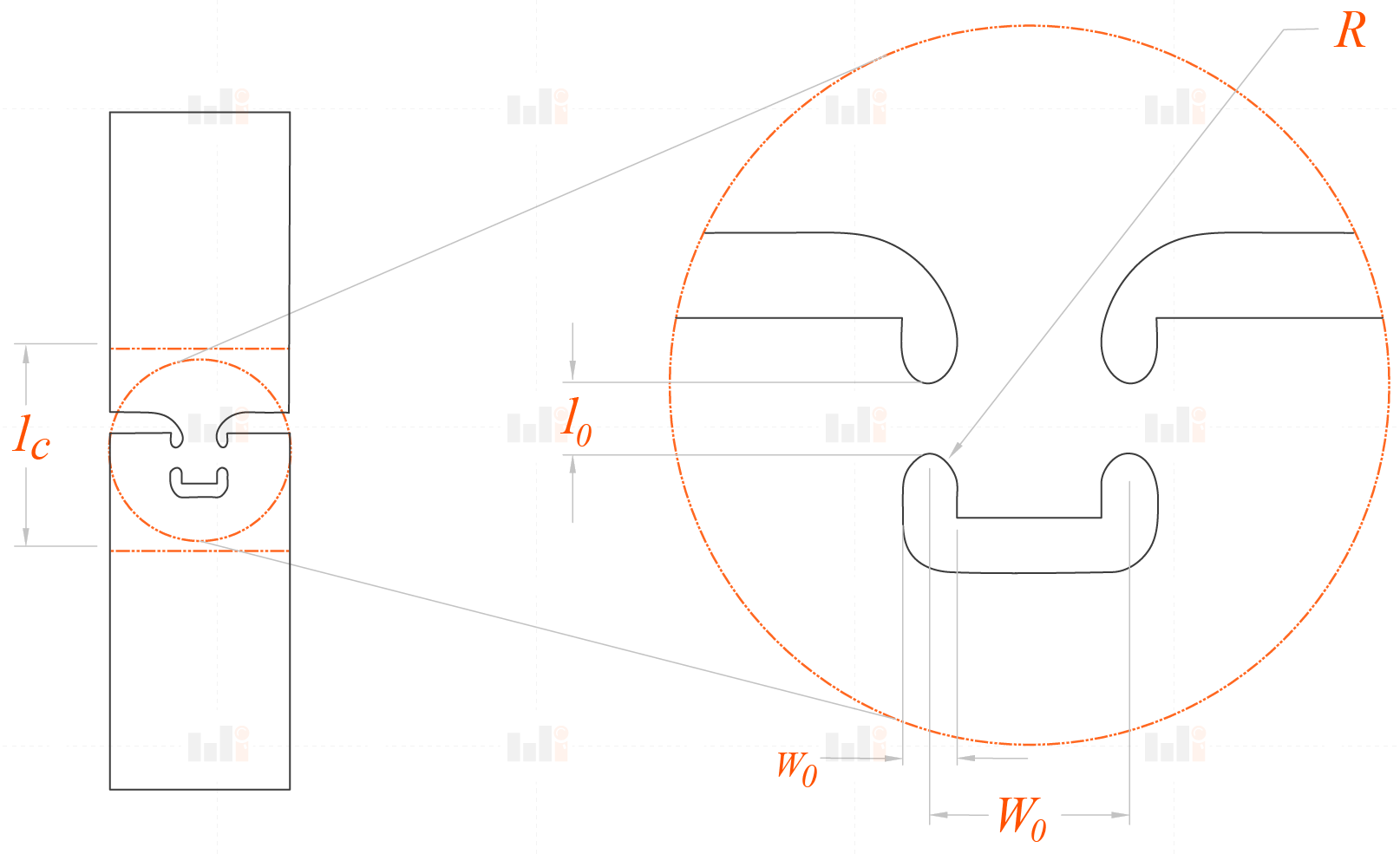
 Shear Test Sample Geometry
Shear Test Sample GeometryBecause shear sample geometry is so intricate, several difficulties arise when preparing and testing shear samples. Sample cutting can only be done by sufficiently precise cutting methods, such as wire electric discharge machining (Wire EDM); other methods such as waterjet cutting and milling can be used but make it difficult to create shear samples within an acceptable tolerance!
Shear Testing Method
The video below shows the Shear Testing method
Shear Testing Results
Using data from the test sensors, a shear stress strain curve can be determined for the material. Like the more common tensile stress-strain curve, the shear curve plots the stress in the material at every time during the test against the measured strain at that time. However, stress-strain curves derived from shear conditions will look very different from those derived from uniaxial loading, even for the same material. Knowledge of the relevant shear stress-strain curves can be very useful when engineers work with materials that are expected to undergo strong shearing conditions.
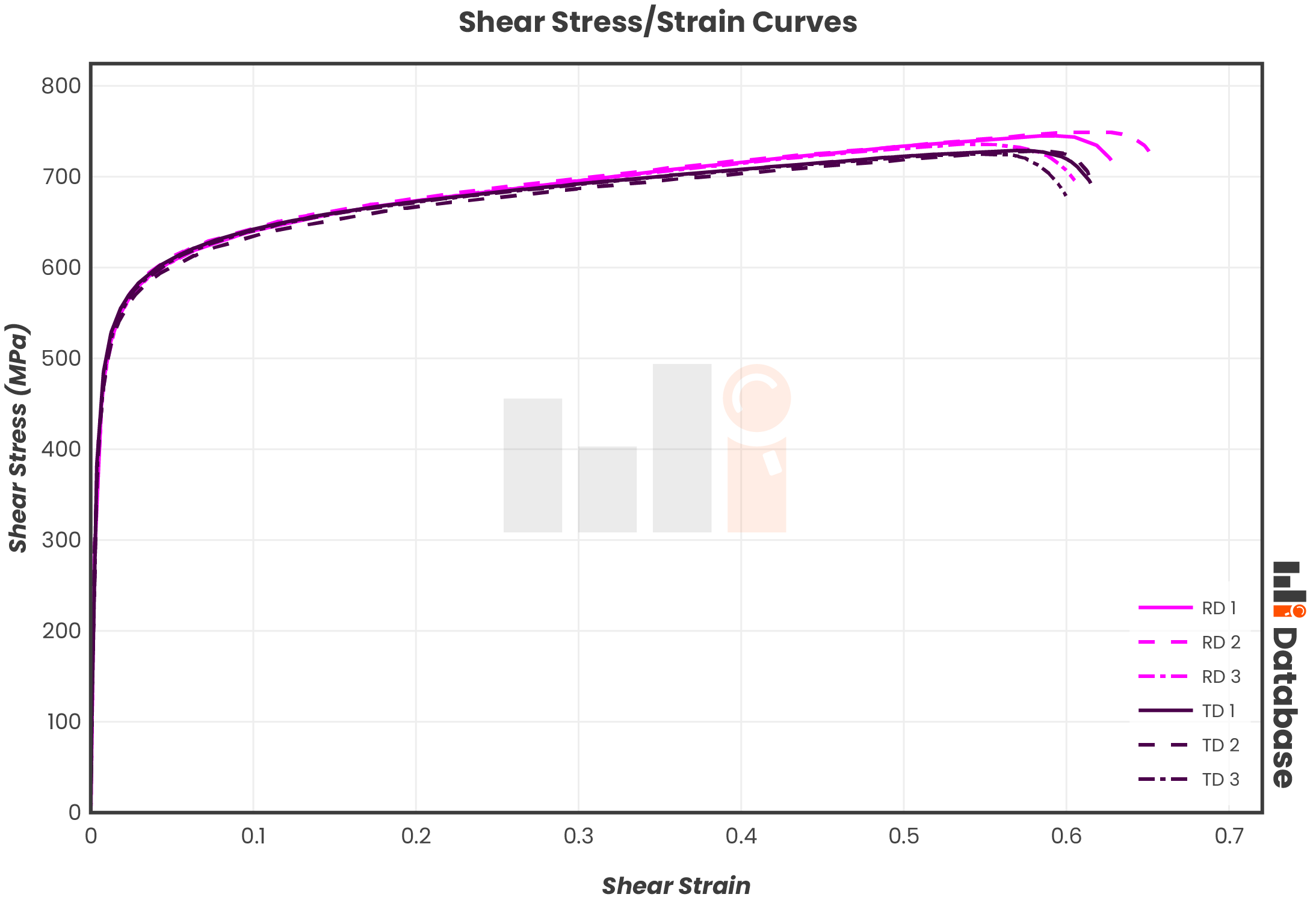
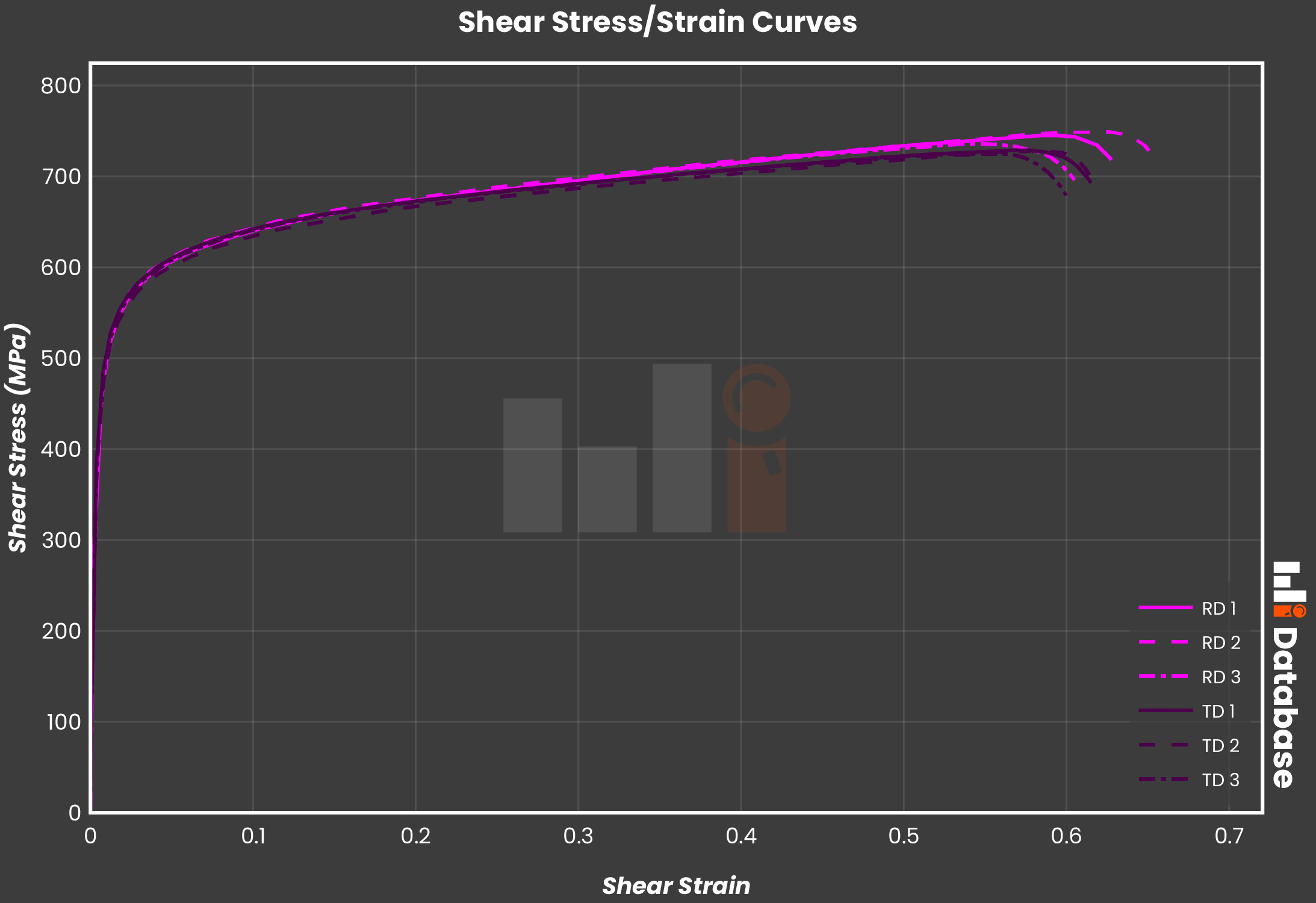 Shear Testing Results-Stress Strain Curves
Shear Testing Results-Stress Strain CurvesShear Testing Standards
Though standards such as ISO 4587, ISO 898, ASTM D1002, and ASTM F606 cover shear testing for components and part interfaces, international standards do not currently exist covering shear testing for metal material samples.

